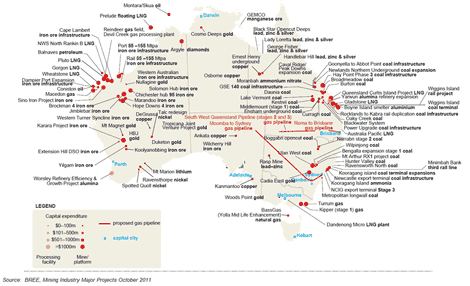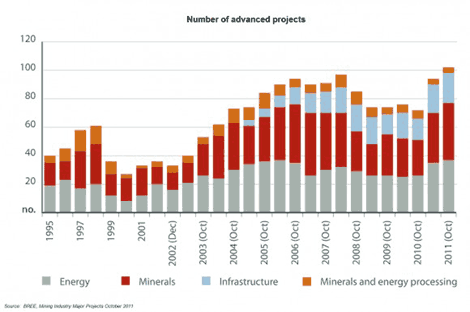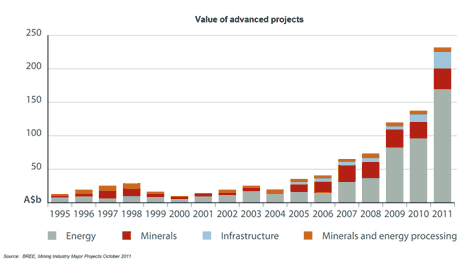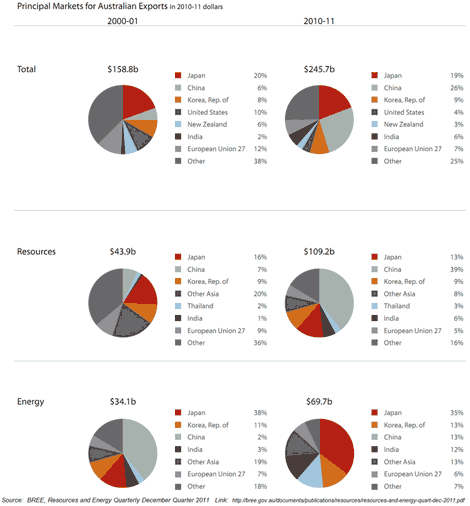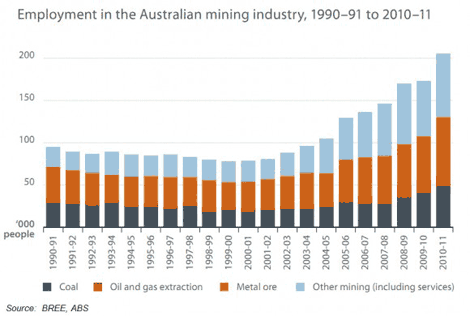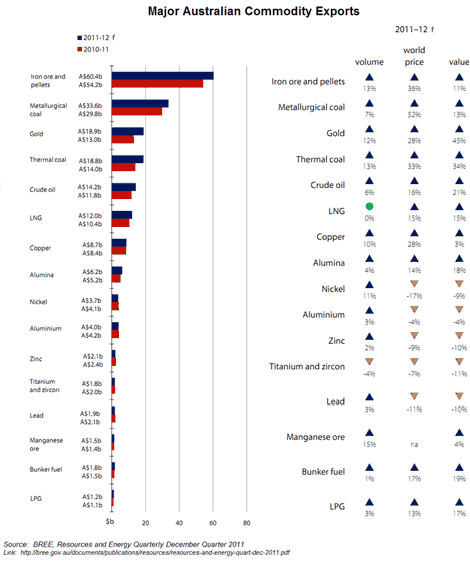No cracks appearing in resources sector: RP Data's Tim Lawless

Will Australia's resources boom continue? Well, the experts certainly think so. If you have any interest in the resources sector, arguably the best source for information is the Bureau of Resources and Energy Economics. The most recent forecast for the 2011-12 financial year is a 15% increase in the value of Australian energy minerals and metals over the previous year, bringing the total value to over $200 billion, which is a record for export earnings.
The number and value of advanced resources projects is at an all-time high with most of these projects located in Queensland (31) and Western Australia (40).
Click to enlarge
Additionally there are a further 404 "less advanced" projects that are either undergoing feasibility study, awaiting approval or awaiting final investment decisions. These include 14 proposed LNG developments, which have the potential to add 75 million tones to Australia’s annual LNG production capacity. BREE also point out that there are 15 less advanced iron ore projects, which have an estimated capital expenditure of $1 billion or more.
In its Resources and Energy Quarterly for December, BREE outlines its forecasts for the sector and acknowledges there is some risks based on the global economic woes, specifically European sovereign debt and the liquidity crisis. Additionally there has been some weakening in the spot prices for key commodities such as iron ore and metallurgical coal.
The bulk of the demand for mineral and energy commodities will continue to be supported by China, India and other non-OECD economies. Within the OECD, demand for Australian commodities is likely to be strongest in Japan, where the infrastructure spending post earthquakes and tsunami will be high. Economic growth is likely to slow across our major export markets (China GDP is projected to ease to 9%, India’s economic growth is expected to slow to 7.5% and Japan’s economy should increase by 2.3%), however BREE has suggested the improved economic conditions in the ASEAN countries, where GDP growth is expected to be around 5.5%, should offset any slowdown in export growth.
Click to enlarge
Growth across the sector will be accompanied by employment growth. The size of the mining industry work force increased 19% during 2010-11 and is up by more than 170% over the past decade.
Click to enlarge
BREE is forecasting improved performances in the volume and value of key Australian commodity exports. Exports of iron ore, which is Australia’s largest commodity market, is forecast to increase by 13% in volume and 11% in value. The export of metallurgical coal, the second largest commodity export, will rise by 7% in volume and 13% in value.
Based on the above information it looks like the resources sector will continue to benefit from ongoing demand for Australian commodity exports. A direct benefit will continue to be seen in those housing markets that are closely tied to each of the respective commodity markets and the major service centers that provide essential services and a large component of the labour force to the mining regions. Mining-related investments are of course very sensitive to movements in commodity prices and global demand; however there don't appear to be any cracks emerging in these markets just yet.
The indirect benefit, of course, will be seen in robust local economic conditions and a continuation of the two speed economy. The most recent forecasts from the RBA show GDP growth at 4% by June 2012 before easing to 3-3.5% by December 2012 and underlying inflation tracking around 2.5% to 2.75%.
Click to enlarge
Tim Lawless is head of research at RP Data.
This article originally appeared on RP Data's blog.
